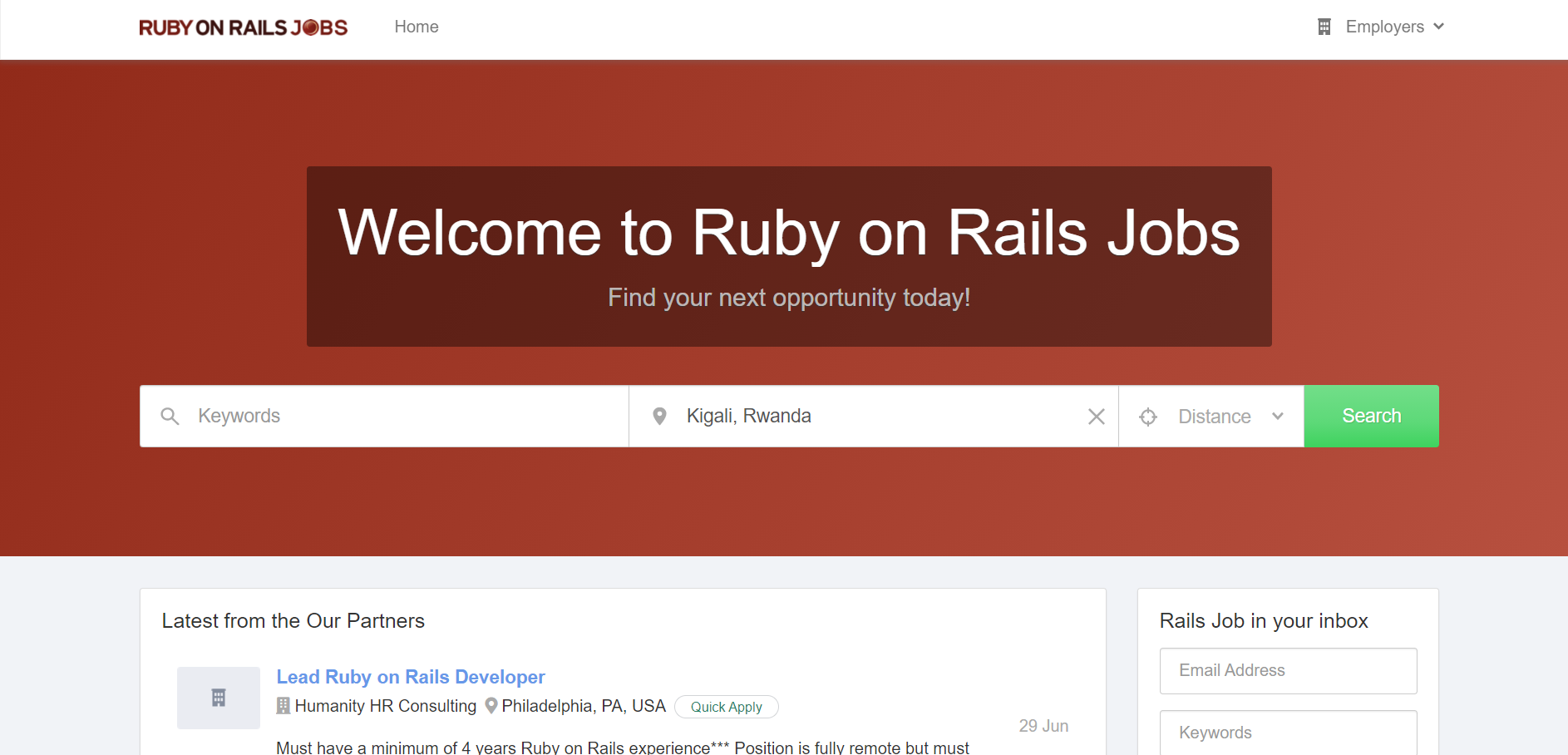

You must be wondering why you should opt for Ruby on Rails, which is a relatively new programming language, while HTML and CSS are available. If you are a web developer, you must learn ruby on rails to select a top-rated framework for the smooth performance of the websites. ruby developers should definitely consider using these tools when building their applications.Do you want to learn a new skill, like Ruby on Rails, but are confused about career opportunities? Here is a complete guide on Ruby on Rails jobs.
#LIBRARY RAILS JOBS CODE#
By using Active Job and Redis, ruby developers can easily create and manage background jobs without having to write any additional code or worry about scalability issues. You can also use Redis to monitor and manage your background jobs by using its built-in command-line tools or one of its many GUI clients.īackground jobs can be extremely powerful and helpful when used correctly in Rails applications. To enqueue a job in Redis, you can use the `enqueue` method: Once Redis has been configured, you can use it for your background jobs. Once you’ve added Redis to your Gemfile, you need to configure it in your `config/application.rb` file:

To get started with Redis in Rails, you first need to add it to your Gemfile: Redis is an open-source, in-memory data structure store that is used for caching data and queues.

The most popular queueing backend for Rails applications is Redis. In order for this to work properly, you will need to set up a queueing backend and configure it properly. The queueing backend is responsible for executing the job and keeping track of its progress. Once your job has been enqueued, it will be processed by the queueing backend. Once you’ve created your job class, you can enqueue it by calling `MyJob.perform_later`. You can also specify a different queue by using the `queue_as` method. The above code creates a job class called MyJob that is associated with the default queue. To do this, you first need to create a job class:
#LIBRARY RAILS JOBS INSTALL#
Once you’ve added the gem to your Gemfile, you need to run `bundle install` to install it.Īfter Active Job has been installed, you can start creating background jobs. To get started with Active Job, you first need to add it to your Gemfile: It provides a common interface for all supported queueing systems, so you can use any of them without having to learn a new API each time. Active Job is a framework for declaring jobs and making them run on a variety of queueing backends. The most popular way to use background jobs in Rails is by using a library called Active Job.
#LIBRARY RAILS JOBS HOW TO#
Now that we’ve discussed the basics, let’s take a look at how to use background jobs in Rails. This type of background job is typically used in Rails applications as it helps improve performance and scalability. This type of background job is rarely used in Rails applications, as it can lead to poor performance.Īsynchronous background jobs are tasks that are executed in a separate thread, allowing the main thread to continue running. This means that the main thread is blocked until the task is complete. Synchronous background jobs are tasks that run in the main thread of execution. In this tutorial, we’ll discuss the basics of background jobs, how they work in Rails, and how to use them.īefore we get into the details, it’s important to understand that there are two types of background jobs: synchronous and asynchronous. They are usually used when tasks don’t need to be completed immediately, or you want to ensure that the task isn’t blocking the main thread. Background jobs are a way to execute tasks outside the main thread of execution in a Rails application.


 0 kommentar(er)
0 kommentar(er)
